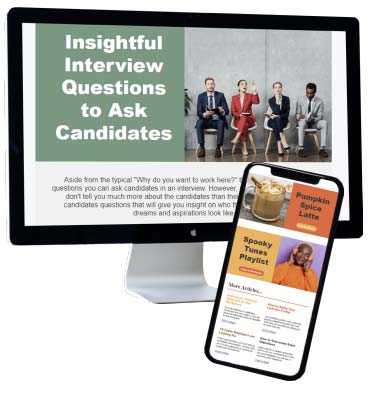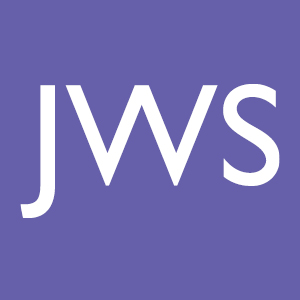Before You Go!
Sign up for our newsletter - which features professional templates, job market updates, articles, playlists, recipes, and more, sent directly to your inbox!



There is no doubt that the COVID-19 pandemic has had, and continues to have, a major impact on the lives of everyone in the world. New perspectives, values, and motivations were formed that will continue to affect people and companies for many years to come. Professionalism in the workplace looks different due to the pandemic, and companies are working on getting up to speed.
Will your company be one of the innovators embracing the new definition of workplace professionalism, or will you be left in the past? In the following, we’ll go over some of the unique values of workplace professionalism post-pandemic and how your company can practice them.

With new perspectives and values comes new expectations for employers. These shifts demand that you review and revise your current policies to stay in the game. From compliance with new laws to navigating the new workforce, understanding how the pandemic has affected these expectations is crucial.
Compliance with the Law
Workplace laws and regulations are constantly changing as a result of new ideals and values, so it’s important for you to stay abreast of your federal, state, and local orders. For example, as of writing this article in June 2021, California has introduced new OSHA Emergency Temporary Standards, which protect employees who choose to wear face coverings from any retaliation on the employer’s end. Employees are counting on you to provide a safe work environment for everyone, so you should create your policies with their safety in mind.
Workplace Protocol
Consider the environment you are creating for your team members. Is it one that makes them feel comfortable and safe? Employees are more conscious than ever about their well-being in the workplace, which shines a light on conduct that we didn’t give a second thought about until the pandemic hit. We’re talking about things like shaking hands, sanitizing shared workspaces, dress-code policy, and gathering for potlucks or catered luncheons in the office. Take a look at your protocols, and adjust as you see fit for your team’s safety and comfort levels.
Remote, Hybrid, or In-Person Workforce
As you’re all too familiar with, most companies adopted a remote or partially remote workforce when the pandemic shut down in-person operations. As pandemic restrictions lift and offices are re-opening, now is the time for all of us to revisit remote and in-office work policies. Some employees may not feel comfortable returning to work yet or might have become accustomed to working from home, so it’s important to consider the environment and policies for all of your employees, so they are equal and fair for everyone. When developing a policy for your new workforce that allows for some remote work or a hybrid workforce, consider basing eligibility for remote work on employee tenure, job function, or another non-discriminatory factor. Ensure the policy is neutral in its application and does not adversely impact a group of employees protected under Title VII of the Civil Rights Act of 1964 or under similar state or local law.

Employers should always keep clear and open communication with their team. Transparency is essential for workplace professionalism, and your employees will appreciate you keeping them informed. Since the pandemic, employees have adapted their expectations on the types and levels of communication they receive from their employers.
Policy Communication and Reminders
Be clear and concise when delivering policy changes. Clear communication will help prevent confusion surrounding new policies. To ensure that your update is understood by everyone, communicate it via more than one medium when possible. For example, if you share a policy change via phone, you should also email the entire company. Sending an email will remind those who were informed verbally and deliver the message to those who were not present for (or maybe weren’t paying attention to) the verbal directive.
Communication Platforms
In addition to traditional mediums such as phone and email, other digital platforms can help team members effectively collaborate without needing to be in the same room. Communication software such as Microsoft Teams or Slack allows your team to communicate freely via chat format, increasing engagement and collaboration. Websites such as Asana.com, Monday.com, or AirTable.com allow for efficient online project management, helping your team stay on track and meet deadlines. (We’ve experienced firsthand that even employees who are in an office with one another benefit from these various mediums!)
Shared Vision and Goals
Sharing the new vision and goals for your company will help employees who are returning to the workplace, as well as those working remotely, embrace a shared vision of what comes next. Help your team get on the same page by clarifying your new policies, outlining your goals, and planning ahead. Your employees will be grateful for your professionalism and transparency as a result.

Last (but perhaps the most important topic from an employee retention standpoint) is understanding your employees’ needs. Viewpoints, comfortability, and workplace habits have shifted over the last year. Listening to your employees, practicing empathy, and adjusting accordingly is essential in a post-COVID professional workplace.
Varied Experiences and Comfort Levels
Management teams should lead with empathy and demonstrate an understanding that while all of their employees have experienced this crisis, they haven’t all experienced it the same way. Some employees may feel entirely comfortable walking around without a mask and shaking hands, while other employees may prefer to wear a mask and be wary of physical contact. It’s essential to embody empathy and respect in your own behavior, while also encouraging your team to practice these values. The more you communicate the importance of respecting others’ boundaries to your team, the more you’ll prevent discomfort or disagreements among them.
Adjustment Period
It’s also important to recognize that workforces will need time to adapt to new ways of working post-pandemic. Employees coming back after an extended furlough or remote work may require a grace period to adjust to change and return to full productivity. Try to work out a return-to-work plan with each employee individually before bringing them back on. Setting short-term and long-term productivity goals that are customized to their work habits will help your employees quickly transition back into the workplace.
Checking in
Don’t just stop at initial communication. Every employee will be different and will need different amounts of time to get back up to speed. Ensure that you or your managers regularly check in with team members to see how they feel about the changes. If they are struggling, ask them what can help their productivity, experience, or connection to the company. Actively listen to their requests and try to be open-minded when developing a plan for each person.
Understanding and implementing this new version of workplace professionalism won’t always be easy, but remember that you’re not alone. It’s a group effort that will take time, care, and consideration from each person on your team. If you work together with your team, your company and its culture will sail off in no time.
